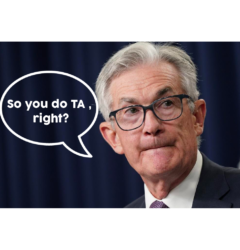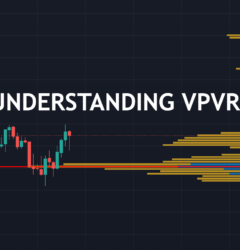23 Apr

Bitcoin is the gold standard in the cryptocurrency world, and any major price change will have a significant effect on this Financial Market Indices. This is because Bitcoin acts as the “benchmark” of the entire cryptocurrency market and usually provides cues to its price direction. This article will cover the S&P Bitcoin Index, S&P Bitcoin Trust, and other notable financial market indices. But how can you know what these numbers mean for your crypto investments?
S&P Bitcoin Index
The S&P Bitcoin Index (BITA) is one of the leading financial market indicators for cryptocurrencies. It measures the performance of a range of digital assets, including bitcoin, ethereum, and litecoin, and is calculated using data from trading platforms, token issuers, and approved 3rd party sources. BITA tracks the top ten cryptocurrencies by market capitalisation, which is a measure of price per unit of currency in circulation. To be considered for the Index, a token or coin must have traded on at least two exchanges, and is often accredited with market acceptance. Likewise, a coin must have been trading for three calendar months to be eligible for inclusion in the Index.
The S&P Dow Jones Indices will use data from a virtual currency company called Lukka to compile the Crypto Index. Among these, Bitcoin is the most popular, and has enjoyed a wild rally in price over the past few months, fueled by high-profile company backing. Ethereum, on the other hand, recently rose to record highs and broke through $3,000 for the first time.
The volatility of cryptocurrency markets has been closely tied to the S&P Bitcoin Index. Any meaningful change in the price of Bitcoin will affect the index. However, if Bitcoin’s value is impacted by an international market crisis, it would not affect the creditworthiness of the banks we rate. This is because Bitcoin is the gold standard of the cryptocurrency market and typically provides cues for price direction.
Although the price of Bitcoin is a leading indicator of the cryptocurrency market, the price of a digital currency is highly volatile. Unlike fiat currencies, which are subject to the whims of governments, a digital currency has no central authority. Therefore, it is vulnerable to price fluctuations. However, this volatility is offset by a wide range of fundamental indicators that affect the market. Among these are changes in technology. The price of Bitcoin increased from $2700 to $4000 in just two weeks.
The S&P Bitcoin Index has also been widely regarded as one of the leading financial market indicators for the crypto world. This index is based on data from various sources, including cryptocurrency exchanges, the aggregated cryptocurrency index, and user forums. These data sources also offer sentiment analysis. When used correctly, S&P Bitcoin Index can help investors decide on the optimal investments for their portfolio.
The correlation between the S&P Bitcoin Index and the S&P 500 has increased considerably in recent years. It is among the highest levels recorded in the past year. As such, it is important to monitor Bitcoin and other cryptocurrencies as the correlations between the two are likely to increase in the near future. The stronger the correlation, the greater the risk associated with a crypto-asset.
S&P Diem Index
The S&P Dow Jones Indices, the world’s largest index provider, has announced a new series of benchmarks for digital assets. The S&P Digital Market Indices will measure the performance of digital assets traded on recognized open cryptocurrency exchanges. Later this year, these benchmarks will expand to include other cryptocurrencies and broader-based indices. For now, this new initiative will help investors gauge the potential of cryptocurrencies, which are still highly volatile.
Investing in cryptocurrencies may be a way to protect against a volatile market. The S&P Diem Index measures the performance of the five most traded cryptocurrencies in the world. The Index also tracks the performance of digital assets such as bitcoin, ethereum, and tether. The underlying assets of these coins are subject to intense scrutiny. A recent article by Bloomberg found that Facebook-backed digital currency Tether was unable to provide transparency about its underlying assets. Another crypto backed by Facebook changed its name to Diem amid policy controversies.
The correlation between Bitcoin and the S&P 500 has increased. This increased correlation limits the perceived risk diversification benefits of cryptocurrencies and raises the risk of contagion to other asset classes. Prior to the Bitcoin pandemic, crypto assets showed low correlation with the major stock indices. Investing in these assets was considered a hedge against volatility in other asset classes. However, as central banks responded to the crisis in early 2020, this correlation began to increase. The correlation between crypto assets and stock markets grew during the period of easier global financial conditions and greater investor risk appetite.
The S&P 500 Financial Market Indices are indexing blockchain and cryptocurrency technology companies. Alibaba and SAP are offering blockchain-as-a-service. Samsung is working on a mobile crypto wallet, while Cloudflare operates an Ethereum gateway. Twitter and Facebook have also made investments in cryptocurrency, but they’re all too small to make the list of S&P 500 companies. A recent report indicated that the S&P 500 has invested $1.5 billion in Bitcoin and is considering using cryptocurrency as a payment method.
S&P Bitcoin Trust
A recent report titled S&P Bitcoin Trust: One of the top Financial Market Indices for cryptocurrency explained that a cryptocurrency market is volatile, and that a substantial drop would hurt retail investors most. However, this report found that a significant decline in crypto markets would not impact the creditworthiness of banks that we rate. This is in contrast to some other reports, which found a significant correlation between the cryptocurrency market and the creditworthiness of conventional assets.
Moreover, institutional investors are increasingly including cryptoassets in their portfolios. The most recent Fidelity Institutional Investor Digital Assets Survey indicates that about 13% of US and 23% of European hedge funds held cryptoassets in September 2021. These cryptoassets make up just 0.4% of global financial assets, and only 3% of US pension funds and endowments are directly investing in these assets.
The FPC has identified a range of indicators that affect crypto markets and crypto signals. The key indicators are the number of cryptocurrencies being traded, their value, and the number of users. The FPC is concerned about the risks cryptoassets pose to financial stability. Its primary objective is to ensure that the UK’s financial system remains resilient and is prepared to handle these new technologies. The report also highlights the potential risks and challenges.
The price of cryptocurrencies is heavily affected by news of hacking. For example, Bitcoin’s price rose from $2700 to $4000 in two weeks. Similarly, news of hacking often results in a decline. This is why it’s so important to closely monitor S&P Bitcoin Trust as one of the top financial market indicators for crypto. If it is up for a significant correction, investors should consider a hedge.
Financial Market Indices Conclusion
While crypto assets are not regulated by local governments, they are subject to strict regulations. These regulations can make it difficult to invest in the crypto markets. However, if you’re interested in investing in crypto, it’s essential to know which financial instruments are regulated by local governments. Furthermore, a company that follows local regulations may be more flexible and responsive to trends. As a result, it may also be able to target institutional customers.





